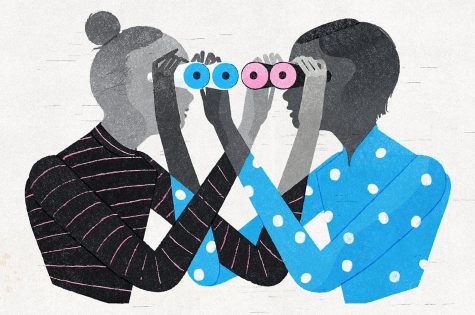Opinion: Rise in Hate Crime Calls for Empathy In Schools
Christian Hall is a 19 year old Asian American who was shot by the police even thought he did not pose a threat.
February 18, 2021
The other day at South, I saw another student being made fun of because of their English proficiency and also another student experiencing racist Asian jokes.
Teachers, you must’ve seen racism or some forms of prejudice inside the classroom but shy from engaging in it to save face.
The oppression, silence, and disrespect cannot go on. The trend of hate crime, motivated by race, gender, and ethnicity, is at a third-year high with 7,314 incidents in 2019, according to a New York Times article. The article adds that it’s likely that the numbers are higher because enforcement agencies are not required to report to the F.B.I and victims fail to report the incident.
And recently, Christian Hall, a Chinese American of 19 years old, was shot during a mental health crisis, even when he had his hands up and did not pose a threat.
So, teachers and students, We have to ask ourselves: If we had empathy, trained therapists instead of police; if we had empathy in daily life, would things have been more different?
Starting with Empathy
This is not a piece to blame or reprimand. Let’s be honest, if you were born in another environment with different political beliefs, you would be a very different person. You shouldn’t be judged by your environment, but by your ability to grow.
It is uncomfortable to face what could make us lose face and our close relationships. However, we should not look away because as Tara Westover said:
“When we deny what is worst about ourselves, we also deny what is best. We repress our ignorance, and thus we deny our capacity to learn. We repress our faults, and thus we deny our capacity to change.”
So let’s not deny this opportunity to change. Teachers, let’s re-prioritize teaching what’s most important. Let’s start with empathy.
Causes
But before we get to the solution, let’s look at the root causes of racism.
First, students don’t even know the pain exists at all. It’s not a lack of knowledge about the pain of white supremacy and oppression; students don’t even recognize the pain exists at all, as said by Priya Vulchi and Winona Guo, authors of the book Tell Me Who You Are. “They don’t recognize the human beings that are being affected, and they don’t feel enough to care.” So, they go on and treat other people without walking through their shoes.
Second, students get away with it. That’s why racism is rampant and continues in schools. Look at what North Dakota students are saying on the Instagram page @racisminndschools. There are over 400 posts of students sharing their racist encounters. If it’s still happening today, what happens when students carry out their racist beliefs into the world as they age? They get to vote off of their opinions and have kids that probably share the same racists biases and beliefs. And then their kids act on those beliefs in school towards other students. The vicious cycle continues.
So it’s time to flip the script with implementing empathy.
Solutions
Schools don’t do enough to teach empathy. Teachers, this is where you play a role. Teachers often and sometimes teach materials from a rigid curriculum that are arguably useless after students graduate. However, teaching empathy goes a long way to increasing student engagement, creativity, and a better learning environment, in an increasingly political world.
Better relationships. When students understand instead of bringing down each other, they are more likely to build better relationships, which is the very reason why students go to school in the first place.
Boosts creativity. A recent study showed that empathy can be implemented and found that it boosts creativity and emotional expression, both of which are more needed than ever.
It’s necessary. We need to build a generation that has empathy for each other in an increasingly political world. With empathy, it will be easier to discuss policies and lead to less conflict.

Some practical steps are doing 15 mins of empathy-related activities instead of SSR. Talk about the current news and have students see through the lens of those affected by it.
Next, you can bring up your concerns in your department and school board and vouch for change.
So teachers, please listen to us. We are not machines that parrot and regurgitate school materials and call that “learning.” We just want to be students who feel safe and know that what we learned at the end of the day meant something.
By starting with empathy, we can flip the script into a world filled with beauty.


